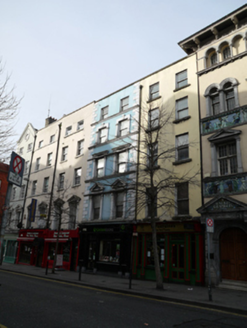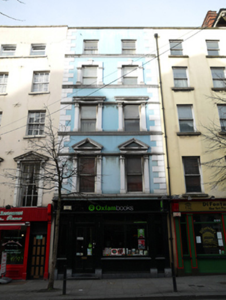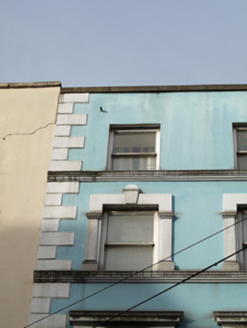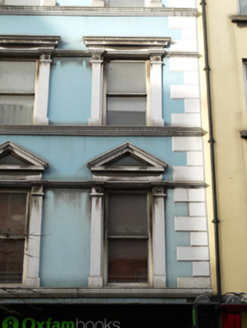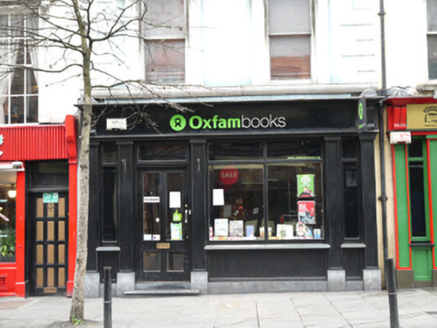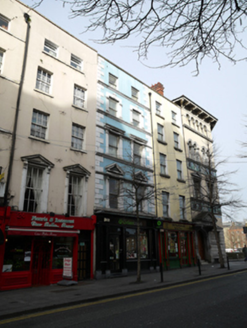Survey Data
Reg No
50020003
Rating
Regional
Categories of Special Interest
Architectural, Artistic, Social
Original Use
Shop/retail outlet
In Use As
Shop/retail outlet
Date
1770 - 1790
Coordinates
315415, 234139
Date Recorded
28/02/2015
Date Updated
--/--/--
Description
Attached two-bay five-storey former house, built c.1780, having recent shopfront to front (east) elevation. Hipped roof, set perpendicular to street, hidden behind smooth rendered parapet with render coping. Smooth rendered wall to front having rusticated quoins and moulded string courses. Square-headed window openings with masonry surrounds, comprising pilasters and entablatures to first, second and third floor windows, pediments to first floor, keystone details to third floor, moulded masonry continuous sill courses and replacement windows. Recent timber shopfront having cut limestone plinth course, timber pilasters and fascia, square-headed window openings with timber framed windows, and square-headed door opening with glazed timber panelled door and overlight. Situated on west side and south end of Parliament Street.
Appraisal
Parliament Street is the first example of formal axial planning in mid-eighteenth-century Dublin. When George Semple designed the rebuilding of Essex Bridge (1753-55) his plan showed a new wide street linking the bridge to Dublin Castle, and this plan for Parliament Street was implemented by the Wide Street Commissioners in 1762. Many of the buildings, including this one, were altered and rebuilt in the nineteenth century. It shares a parapet height with its neighbours, lending a sense of continuity to the streetscape. The proportions of its upper floor openings give a hierarchy to each floor, creating a pleasantly balanced façade. Elaborate render embellishments to the upper floor openings, a feature which became fashionable in the nineteenth century, articulate and enliven the façade, while the use of motifs such as pediments and entablatures refer to the influence of Classical architecture. Historic maps show that the building was formerly numbered 9 Essex Bridge and was described in Thom's Directory of 1862 as being in use as a vintner's.
